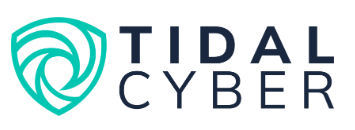DORA doesn’t call for another maturity heatmap.
It demands proof that you can withstand how real adversaries operate and evidence that you’ll continue to withstand them as your technology stack evolves.
If you’re already mapping detections to MITRE ATT&CK techniques and, ideally, to procedures (the specific “how”), you have the foundation. The next step is to convert engineering truth into governance truth without losing technical integrity.
Start with full traceability from threat → control → outcome. For every behaviour you claim to defend, such as OAuth consent phishing or LSASS minidump via comsvcs.dll, maintain a living record that shows:
- Telemetry required: identity sign-in, consent and app-registration logs; or process lineage, handle access, and DLL loads.
- Detection logic: analytic or rule IDs, location (EDR/SIEM/IDP), and tuning notes.
- Response: the playbook steps with defined owners (revoke tokens, isolate host, reset credentials, notify).
- Validation artefacts: most recent emulation run, expected events observed, rule hit evidence, and ticket closure within target MTTC.
If any of these links is missing, you don’t have threat-led defence; you have a policy statement.Translate this into three perspective boards and risk committees recognise:
- Material Threats. A concise list (20–30) of adversary behaviours that matter to your business model and counterparties, scored by attacker likelihood andimpact. Mark the few that could exceed tolerance thresholds. Use behavioral terms: token theft post-phish, privilege escalation via service misconfiguration, low-and-slow exfil to cloud storage, not generic control categories..
- Coverage Status. For each behaviour showcovered / partial / missing, with dates and accountable owners.
o Covered: validated in the last 90 days; playbook met MTTC targets.
o Partial: blocked by a defined issue (e.g., missing SaaS audit, noisy analytic, response friction).
o Missing: accepted, documented with cost remediation options. - Change Log. Show how risk moved this quarter: “Added AAD audit streams; promoted successful hunt for token theft to engineered detection; reduced median time-to-contain lateral movement from 22m → 14m.” Each change ties to behaviours, not to product features.”
Expect two consistent sticking points:
Telemetry debt. Many programmes still attempt to cover identity andSaaS behaviours with endpoint telemetry alone. Own the gap. Estimate the uplift (often a configuration or license change), list which behaviours move from partial to covered when the signal is enabled, and prioritise by risk reduction per £ spent.
Control drift. A control validated once is not a control validated now. Place procedures on a defined cadence (weekly/monthly/quarterly based on risk). Each check confirms: required events observed, analytic fired, playbook completed within target.
When it checklist fails, classify the cause:
- Telemetry: missing or changed data.
- Logic: Thresholds or match errors.
- Orchestration: permissions, API, or manual steps.
- Drift becomes a tracked ticket with an owner, not a unverified assumption.
Metrics that matter:
- Behaviour coverage: % of in-scope behaviours in “covered” status, validated within 90 days.
- MTTD/MTTC: mean time-to-detect and time-to-contain, by behaviour family.
- False-positive rate: per analytic with trend direction.
- Risk moved per £: cost to move a behaviour from missing or partial to covered.
The Coverage Map and validation calendar persist over time, ensuring your evidence isn’t dependent on a vendor roadmap. Thisalso prevents “optimising to the demo”: you measure what adversaries do, not what a SKU can display.

DORA-ready language
When presenting to boards, clarity replaces complexity:: “We defend 24 of 30 in-scope behaviours; 4 are partial due to identity telemetry gaps in legacy tenants; 2 are missing (SaaS privilege creep and low-and-slow exfiltration). Both can be for £X by enabling object-level audit and deploying two procedure-scoped analytics, with expected MTTC under 20m.”
Where a vendor-neutral platform strengthens this narrative by keeping coverage as the single source of truth, independent of any individual product. Behaviours and procedures don’t change when tools or vendors do.
Under this model, DORA stops being a paperwork burden and becomes a forcing function for clarity, driving precise behaviours, explicit controls, and measurable outcomes.
And when someone asks, “Are we covered for OAuth consent phishing right now?” you can answer with a timestamped evidence, not conjecture.
Ready to take the next step?
Bring your top threats, current controls, and one challenging use case. We’ll walk your Coverage Map, surface overlap. You can retire safely, and outline the three most cost-effective moves to reduce risk this quarter.
Case study: Accelerated Threat Intelligence Maturity by 2 Years
A global insurance leader faced a major gap in its ability to operationalise threat intelligence. Read how a recently hired junior threat analyst was tasked with establishing a threat-led defence programme based on MITRE ATT&CK®.
Despite best efforts, the analyst struggled. This case study outlines how Tidal Cyber provided a centralized, structured approach to threat research, profiling, and prioritisation, transforming and elevating the insurer’s security operations.
About this Sponsor
Built by the Team Behind ATT&CK® Tidal Cyber is powered by the practitioners who helped make MITRE ATT&CK® the industry’s common language for adversary behaviour.
With deep roots in ATT&CK stewardship, evaluation programs, and hands-on threat-informed defense, their team has productised the approach they pioneered, making it practical, scalable, and ready for your day-to-day defense.
More in Tidal Cyber
Between techniques & reality
Book your discovery call now.
When 'Good' looks THIS GOOD!
(and why you probably don't have it yet).
You can keep blocking yesterday’s hash, or you can start defending against tomorrow’s behaviour.
Share this story







